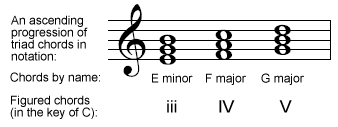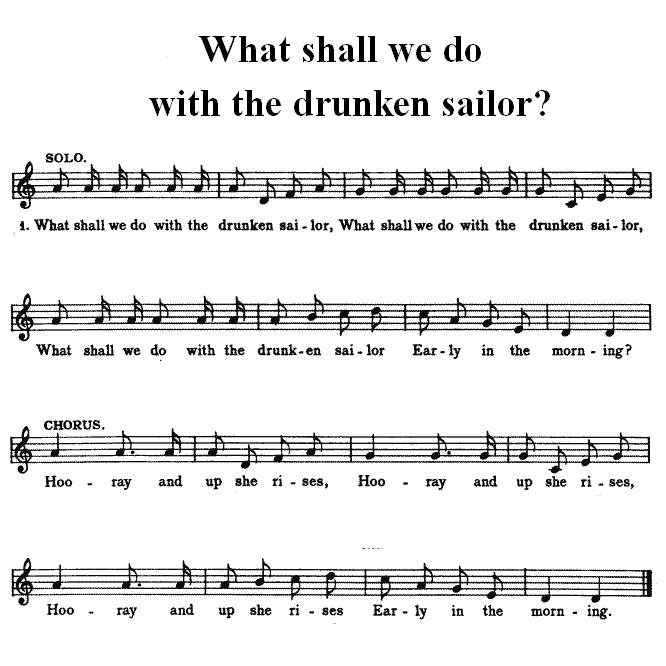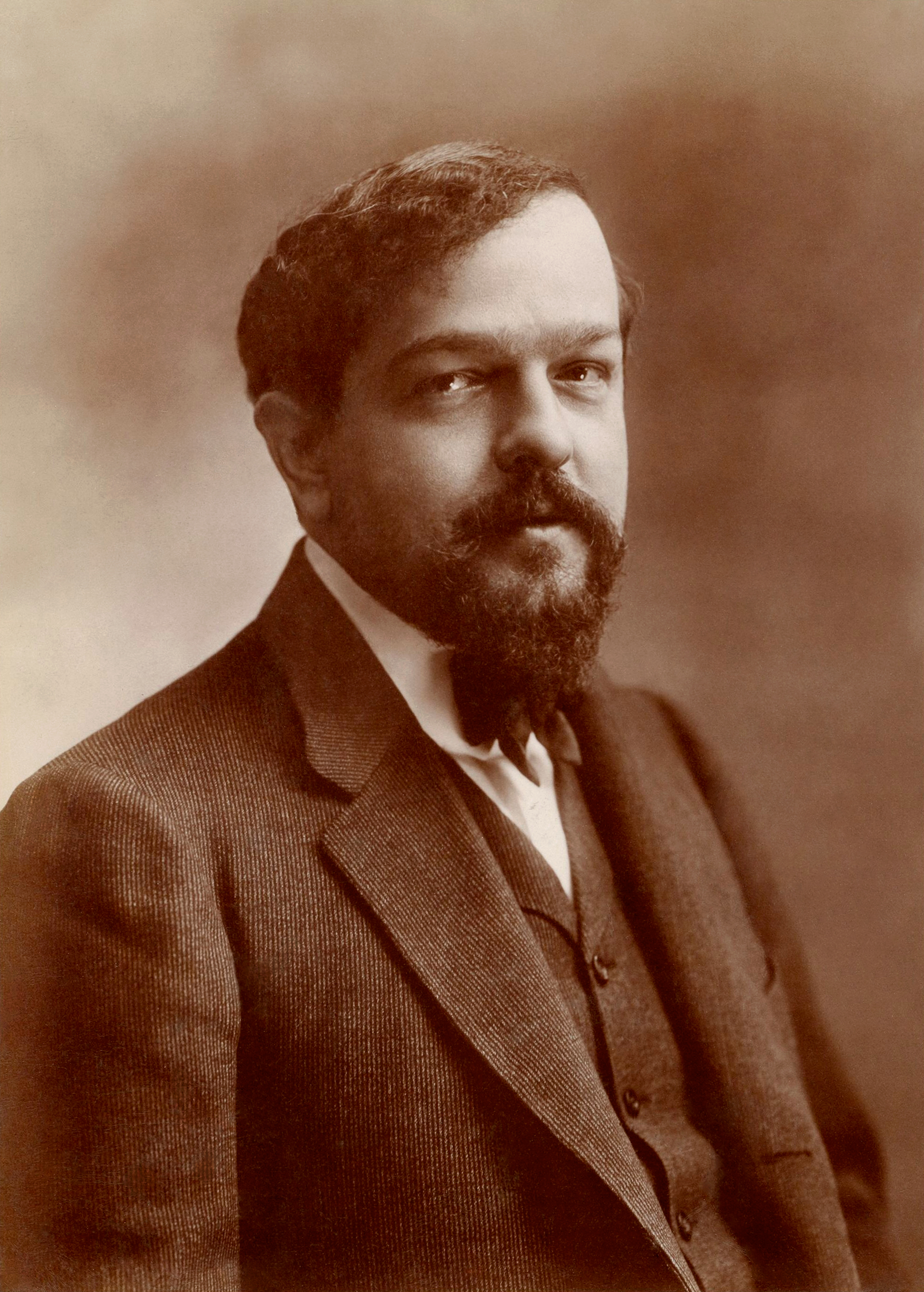|
Double-tonic
A double tonic is a chord progression, melodic motion, or shift of level consisting of a "regular back-and-forth motion" in melody similar to Bruno Nettl's pendulum type though it uses small intervals, most often a whole tone though may be almost a semitone to a minor third (see pendular thirds). van der Merwe, Peter (1989). ''Origins of the Popular Style: The Antecedents of Twentieth-Century Popular Music'', p.205. Oxford: Clarendon Press. . It is extremely common in African music ("Mkwaze mmodzi"), Asian music, and European music, including:van der Merwe (1989), p.206 * European Middle Ages music such as "Sumer is Icumen in" * Elizabethan popular music such as " The Woods so Wild" and "Dargason" *Classical music featuring the regular alternation of tonic-dominant *Alternating ' discords' such as in Debussy or Stravinsky *Gustav Mahler has also used this kind of musical pendulum motion *"Scottish" and European music such as "Donald MacGillavry" *Sea shanties and other work songs ... [...More Info...] [...Related Items...] OR: [Wikipedia] [Google] [Baidu] |
Shift Of Level
A level, van der Merwe, Peter (1989). ''Origins of the Popular Style: The Antecedents of Twentieth-Century Popular Music''. Oxford: Clarendon Press. . also "tonality level", Gerhard Kubik's "tonal step," "tonal block," and John Blacking's " root progression," is an important melodic and harmonic progression where melodic material shifts between a whole tone above and a whole tone below the tonal center. This shift can occur to both neighboring notes, in either direction, and from any point of departure. The steps above and below the tonic are often called contrasting steps. A new harmonic segment is created which then changes the tonality but not necessarily the key. Each level is based on one pitch, a foundation note. A melodic or harmonic-melodic third, triad ( fifth) (such as in the song "Shallow Brown"), or seventh (such as in the song "Donald MacGillavry") may be built off this foundation. A "change" in levels is called a shift. We see this in double-tonic tunes such as " ... [...More Info...] [...Related Items...] OR: [Wikipedia] [Google] [Baidu] |
Chord Progression
In a musical composition, a chord progression or harmonic progression (informally chord changes, used as a plural, or simply changes) is a succession of chords. Chord progressions are the foundation of harmony in Western musical tradition from the common practice era of Classical music to the 21st century. Chord progressions are the foundation of popular music styles (e.g., pop music, rock music), traditional music, as well as genres such as blues and jazz. In these genres, chord progressions are the defining feature on which melody and rhythm are built. In tonal music, chord progressions have the function of either establishing or otherwise contradicting a tonality, the technical name for what is commonly understood as the " key" of a song or piece. Chord progressions, such as the extremely common chord progression I-V-vi-IV, are usually expressed by Roman numerals in Classical music theory. In many styles of popular and traditional music, chord progressions are expressed ... [...More Info...] [...Related Items...] OR: [Wikipedia] [Google] [Baidu] |
The Woods So Wild
"Will Yow Walke the Woods soe Wylde" is the title of a song from the Tudor era, popularly believed to have been a favourite of Henry VIII. The complete text of the song has not survived, but contained the short refrain: :'Shall I go walk the wood so wild, wandering, wandering, here and there'. The melody of the song can be found in several compositions of the period, and would appear to have been popular with composers, perhaps because of its sprightly melody in the Lydian mode, or because it evoked a pastoral mood in the minds of contemporary listeners. Variations The song gave rise to two important keyboard works of the late Tudor era: * The first was by William Byrd. Byrd constructed 14 variations on the melody, starting with a simple 'rustic' presentation of the theme with a drone accompaniment and concluding with a richly polyphonic final variation. Byrd's composition appears in several manuscripts including two of the most important collections of keyboard music of the Ren ... [...More Info...] [...Related Items...] OR: [Wikipedia] [Google] [Baidu] |
Music Of The United States
The United States' multi-ethnic population is reflected through a diverse array of styles of music. It is a mixture of music influenced by the music of Europe, Indigenous peoples, West Africa, Latin America, Middle East, North Africa, amongst many other places. The country's most internationally renowned genres are traditional pop, jazz, blues, country, bluegrass, rock, rock and roll, R&B, pop, hip-hop/rap, soul, funk, Religious music, religious, disco, house music, house, techno music, techno, ragtime, doo-wop, folk music, folk, Americana (music), americana, boogaloo, Tejano music, tejano, Surf music, surf, and salsa music, salsa, amongst many others. American music is heard around the world. Since the beginning of the 20th century, some forms of American popular music have gained a near global audience. American Indians in the United States, Native Americans were the earliest inhabitants of the land that is today known as the United States and played its first music. B ... [...More Info...] [...Related Items...] OR: [Wikipedia] [Google] [Baidu] |
Football Chant
A football chant or terrace chant is a form of vocalisation performed by supporters of association football, typically during football matches. Football chanting is an expression of collective identity, most often used by fans to express their pride in the team they support, or to encourage them, and to celebrate a particular player or manager. Fans may also use football chants to slight the opposition, and many fans sing songs about their club sports rivalry, rivals, even when they are not playing them. Sometimes the chants are spontaneous reactions to events on the pitch. Football chants can be simple, consisting of a few loud shouts or spoken words, but more often they are short lines of lyrics and sometimes longer songs. They are typically performed repetitively, sometimes accompanied by handclapping, but occasionally they may be more elaborate involving musical instruments, props or choreographed routines. They are often adaptations of popular songs, using their tunes as t ... [...More Info...] [...Related Items...] OR: [Wikipedia] [Google] [Baidu] |
Drunken Sailor
"Drunken Sailor", also known as "What Shall We Do with a/the Drunken Sailor?" or "Up She Rises", is a traditional sea shanty, listed as List of folk songs by Roud number, No. 322 in the Roud Folk Song Index. It was sung aboard sailing ships at least as early as the 1830s. The song's lyrics vary, but usually contain some variant of the question, "What shall we do with a drunken sailor, early in the morning?" In some styles of performance, each successive verse suggests a method of sobering or punishing the Alcoholism, drunken sailor. In other styles, further questions are asked and answered about different people. "Drunken Sailor" was revived as a popular song among non-sailors in the 20th century and grew to become one of the best-known songs of the shanty repertoire among mainstream audiences. It has been performed and recorded by many musicians and appeared regularly in popular culture. History Origin and melody The authorship and origin of the song are unknown, but it be ... [...More Info...] [...Related Items...] OR: [Wikipedia] [Google] [Baidu] |
Work Song
A work song is a piece of music closely connected to a form of work, either one sung while conducting a task (usually to coordinate timing) or one linked to a task that may be a connected narrative, description, or protest song. An example is " I've Been Working on the Railroad". Definitions and categories Records of work songs are as old as historical records, and anthropological evidence suggests that most agrarian societies tend to have them. When defining work songs, most modern commentators include songs that are sung while working, as well as songs that are ''about'' work or have work as the main subject, since the two categories are often interconnected. Norm Cohen divided collected work songs into the following categories: domestic, agricultural or pastoral, sea shanties, African-American work songs, songs and chants of direction, and street cries. Ted Gioia built on these categories by dividing agricultural and pastoral songs into subsections: hunting, cultivation a ... [...More Info...] [...Related Items...] OR: [Wikipedia] [Google] [Baidu] |
Sea Shanty
A sea shanty, shanty, chantey, or chanty () is a genre of traditional Folk music, folk song that was once commonly sung as a work song to accompany rhythmical labor aboard large Merchant vessel, merchant Sailing ship, sailing vessels. The term ''shanty'' most accurately refers to a specific style of work song belonging to this historical Musical repertoire, repertoire. However, in recent, popular usage, the scope of its definition is sometimes expanded to admit a wider range of repertoire and characteristics, or to refer to a "maritime work song" in general. From Latin ''cantare'' via French ''chanter'', the word ''shanty'' emerged in the mid-19th century in reference to an appreciably distinct genre of work song, developed especially on merchant vessels, that had come to prominence in the decades prior to the American Civil War. Shanty songs functioned to synchronize and thereby optimize labor, in what had then become larger vessels having smaller crews and operating on strict ... [...More Info...] [...Related Items...] OR: [Wikipedia] [Google] [Baidu] |
Music Of Scotland
Scotland is internationally known for its traditional music, often known as Scottish folk music, which remained vibrant throughout the 20th century and into the 21st when many traditional forms worldwide lost popularity to pop music. Traditional Scottish music comprises a variety of different styles such as ballads, reels, jigs, and airs. Traditional Scottish music is closely associated with the bagpipes which is credited as having a prominent role in traditional music originating from the country. The bagpipes are considered an "iconic Scottish instrument" with a history dating back to the 15th century. Other notable Scottish instruments include the tin whistle, the accordion and the fiddle. The origins of Scottish music are said to have originated over 2,300 years ago following the discovery of Western Europe's first known stringed instrument which was a "lyre-like artifact", which was discovered on the Isle of Skye. The earliest known traces of published Scottish music dates ... [...More Info...] [...Related Items...] OR: [Wikipedia] [Google] [Baidu] |
Igor Stravinsky
Igor Fyodorovich Stravinsky ( – 6 April 1971) was a Russian composer and conductor with French citizenship (from 1934) and American citizenship (from 1945). He is widely considered one of the most important and influential 20th-century classical music, composers of the 20th century and a pivotal figure in modernism (music), modernist music. Born to a musical family in Saint Petersburg, Russia, Stravinsky grew up taking piano and music theory lessons. While studying law at the Saint Petersburg State University, University of Saint Petersburg, he met Nikolai Rimsky-Korsakov and studied music under him until the latter's death in 1908. Stravinsky met the impresario Sergei Diaghilev soon after, who commissioned the composer to write three ballets for the Ballets Russes's Paris seasons: ''The Firebird'' (1910), ''Petrushka (ballet), Petrushka'' (1911), and ''The Rite of Spring'' (1913), the last of which caused a List of classical music concerts with an unruly audience respons ... [...More Info...] [...Related Items...] OR: [Wikipedia] [Google] [Baidu] |
Claude Debussy
Achille Claude Debussy (; 22 August 1862 – 25 March 1918) was a French composer. He is sometimes seen as the first Impressionism in music, Impressionist composer, although he vigorously rejected the term. He was among the most influential composers of the late 19th and early 20th centuries. Born to a family of modest means and little cultural involvement, Debussy showed enough musical talent to be admitted at the age of ten to France's leading music college, the Conservatoire de Paris. He originally studied the piano, but found his vocation in innovative composition, despite the disapproval of the Conservatoire's conservative professors. He took many years to develop his mature style, and was nearly 40 when he achieved international fame in 1902 with the only opera he completed, ''Pelléas et Mélisande (opera), Pelléas et Mélisande''. Debussy's orchestral works include ''Prélude à l'après-midi d'un faune'' (1894), ''Nocturnes (Debussy), Nocturnes'' (1897–1899 ... [...More Info...] [...Related Items...] OR: [Wikipedia] [Google] [Baidu] |





